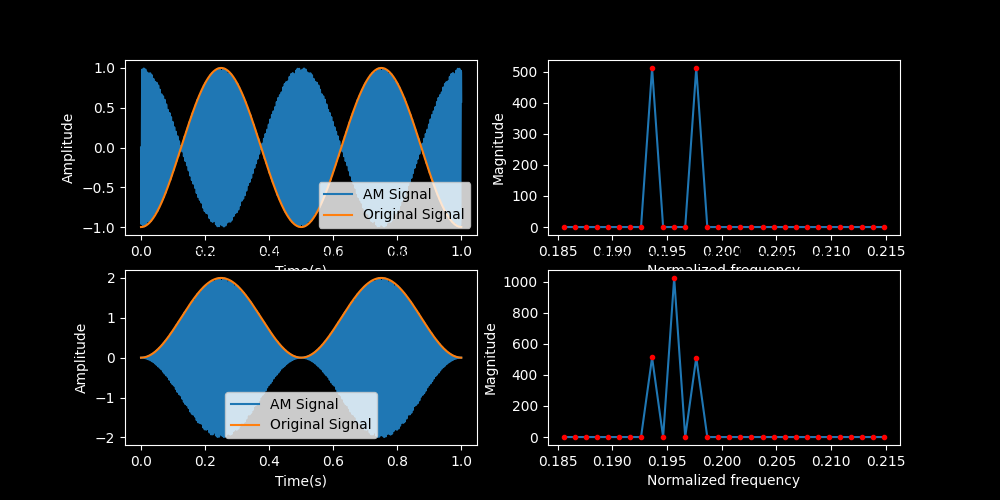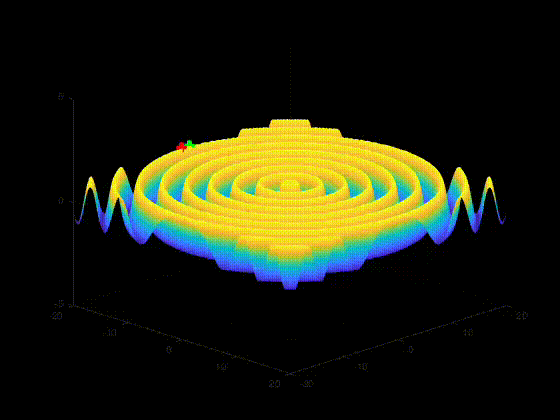Amplitude Modulation#
Amplitude modulation modifies equation (1)
and sets
where
\(A_{\tt offset} \) is the amplitude offset,
\(\beta_A\) is the amplitude deviation, assuming \( \left | m(t) \right | \le 1\)
\(\omega_c\) is the constant center frequency,
\(\phi_c\) is the constant phase.
so that
Below are two examples of amplitude modulated signals where the message, \(m(t)\) is a sine wave.
The first example sets \(A_{\tt offset} = 0\) while the second sets \(A_{\tt offset} = 1\).
When \(A_{\tt offset} = 0\) there is no energy at the carrier frequency. This mode of amplitude modulation is sometimes called suppressed carrier.

Fig. 1 The plots show the time-domain version of a sinusoidally modulated AM signal and the positive frequency spectrum of the signal (zoomed into the peaks).#
